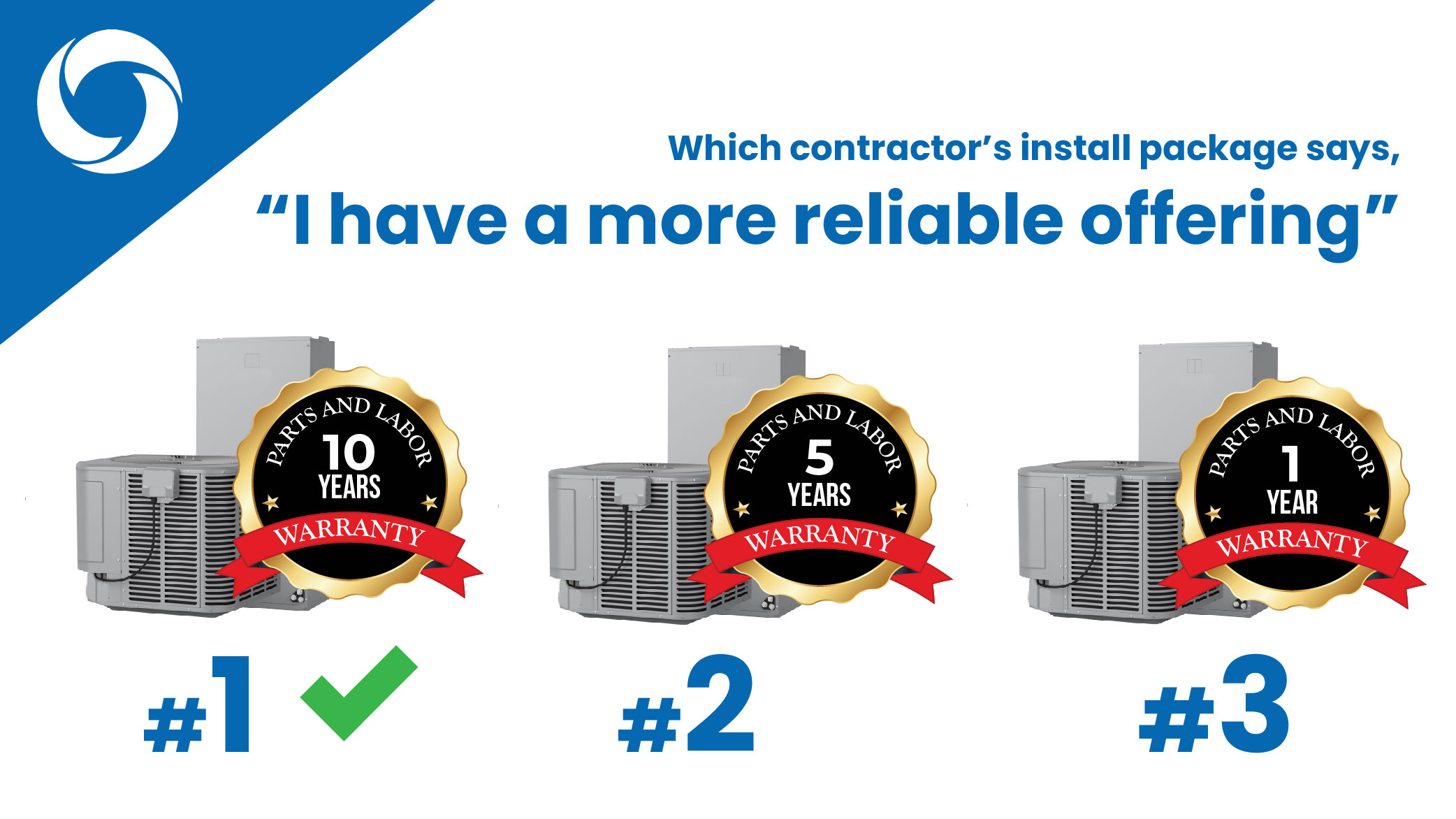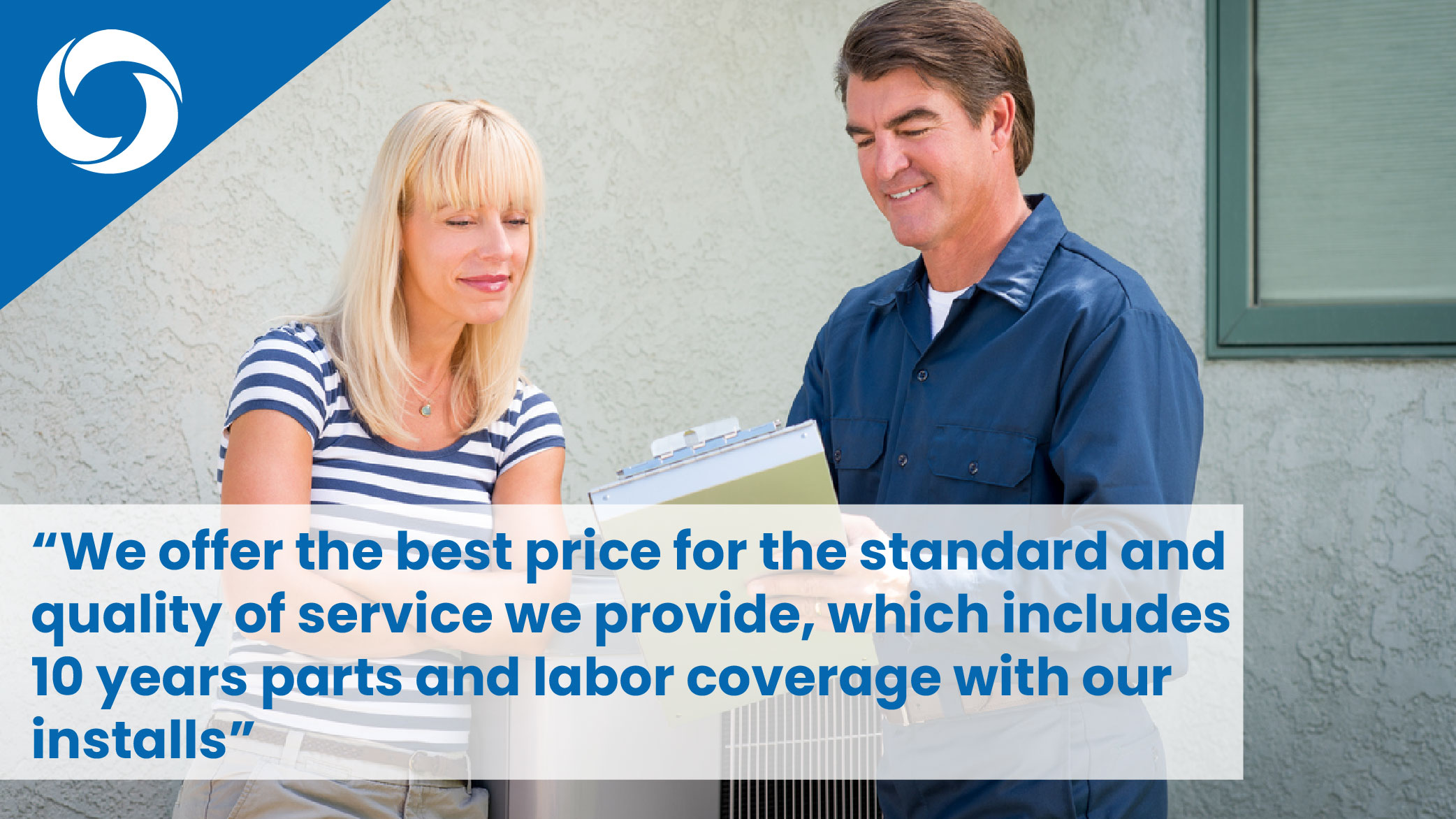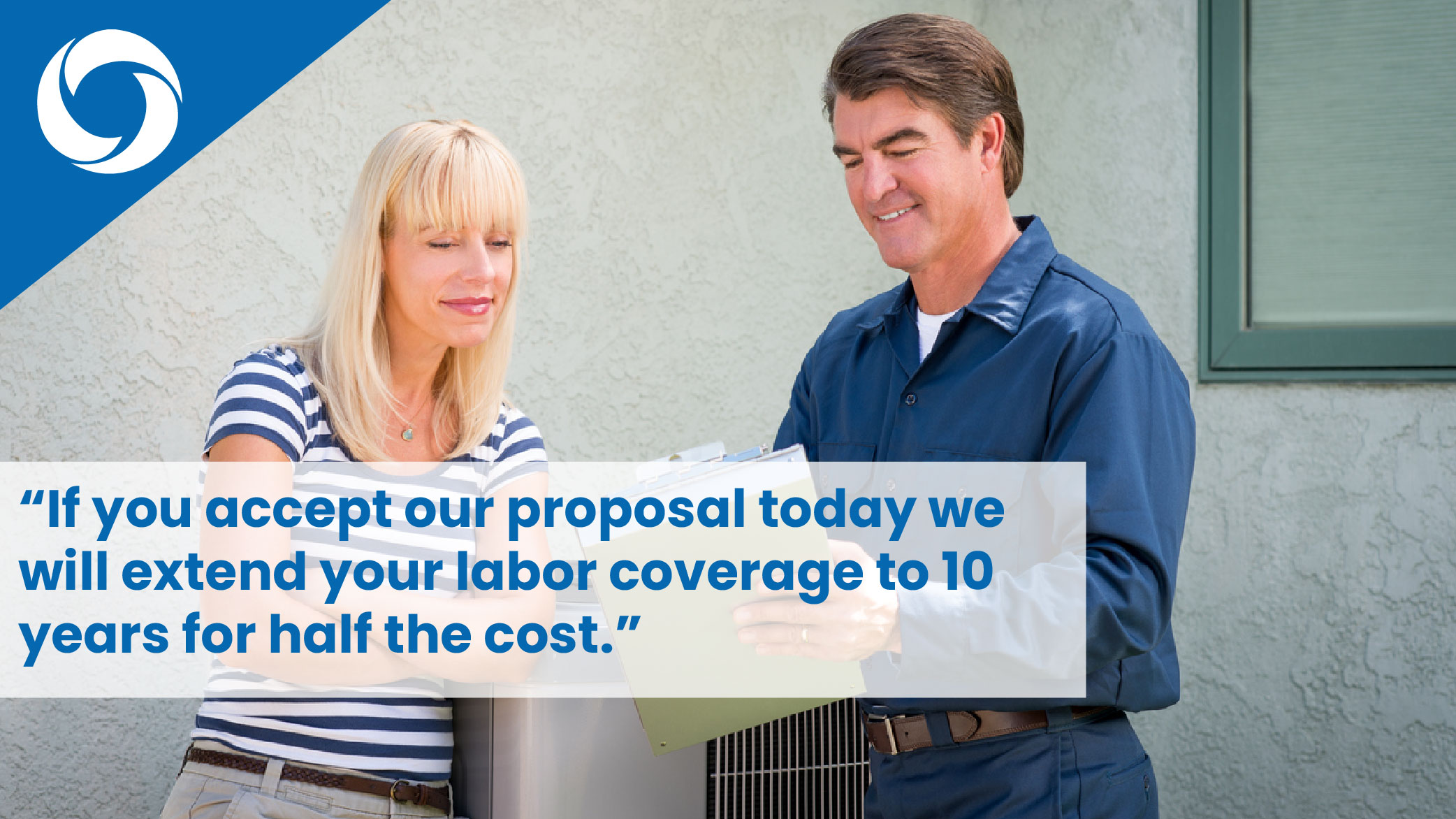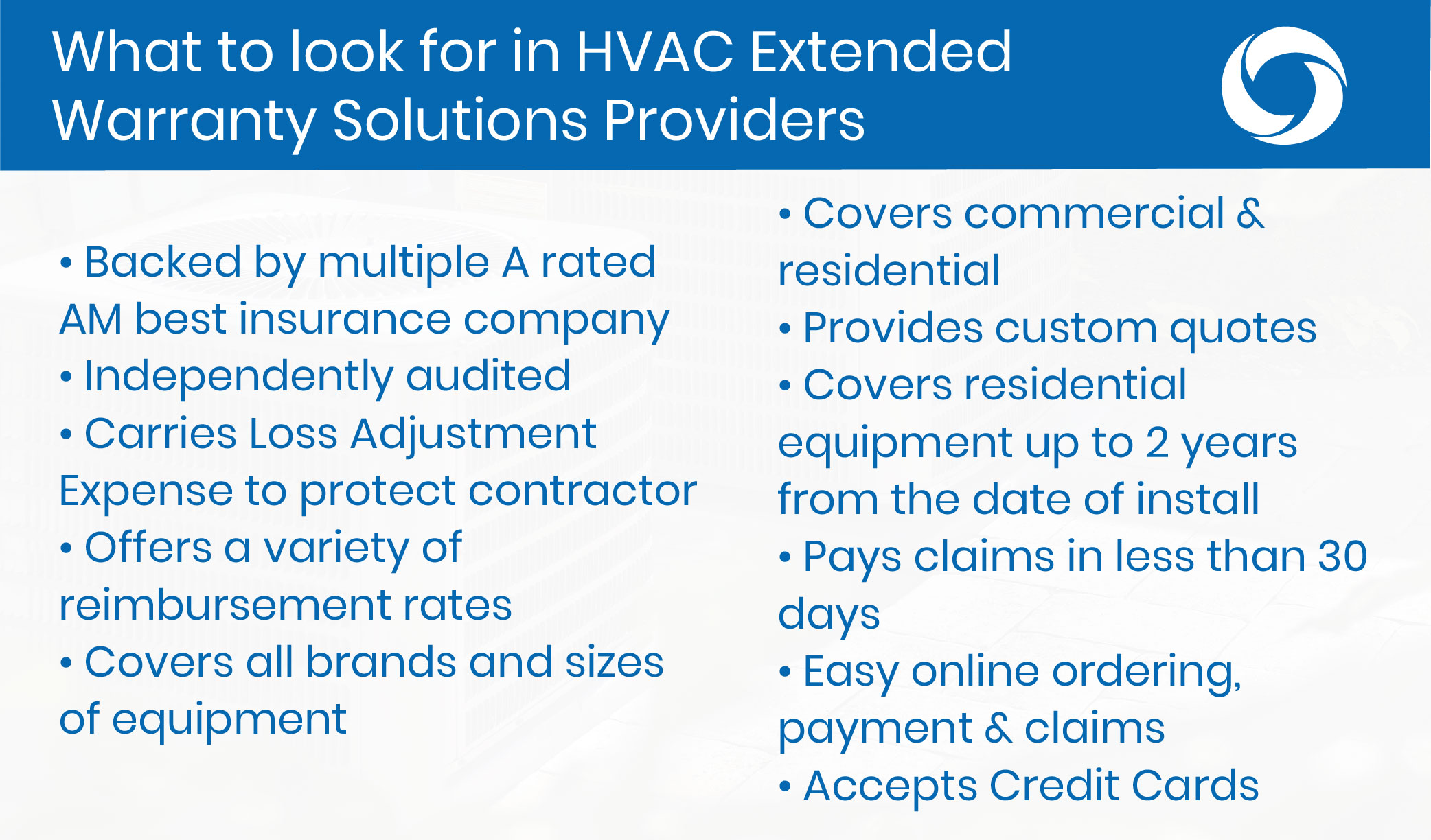ESAs extend the manufacturer's warranty on expensive HVAC / R / plumbing equipment, and protect against unexpected and untimely costly repairs. We can cover all brands and types of equipment.
Read more
Extended Warranty



Extended warranties are commonly associated with electronics, appliances, and vehicles. They are offered to protect consumers from the unexpected cost of repairs. Something similar has made its way into the HVAC industry. Although commonly referred to as Extended Warranties they are actually Extended Service Agreements or ESAs. If you have seen contractors offer 10 years’ parts and labor with their installs, they are most likely using ESAs to provide that coverage. If you are an HVAC contractor that has considered offering ESAs, this page is going to provide valuable insights into ESAs.
HVAC contractors offer extended service agreements for many different reasons. We will break down a few of these reasons. At their core, ESAs give contractors the ability to cover the equipment after the manufacturer’s parts and labor coverage expires. Generally, the coverage is up to 10 years from the date of install.
To appreciate the impact ESAs can have on the overall branding of an install package look at this illustration.

If you knew nothing else about the contractor, which would you say is more reliable? For contractors it is not just the ability to provide the coverage, but more about what that coverage says about them as a contractor. When a consumer is presented with several install proposals, the one that offers the best parts and labor guarantee will be the one that, in the eyes of the homeowner, has a more reliable install offering. It also signals that they are a better contractor. Consumers would infer that, “If they are giving me better labor and parts coverage, they must do a better job.” Much like if you were given 2 options for a stove, and one came with 1-year parts and labor and the other came with 10 years. You would assume that the one that comes with 10 years is a more reliable stove.
The goal is to gain a competitive edge over your competitors
Many factors play into a company’s brand, such as good reviews, a nice website and good customer service, both on the phone and in person. Offering a better install package than your competitor is just one piece of the puzzle that will set a contractor apart in their market. The goal is to gain a competitive edge over your competitors, or if your competition is already offering extended coverage, you now can level the playing field.
Contractors are always looking for ways to improve their bid-to-close ratio and overall sales process. ESAs can help improve your sales process by helping contractors build trust, compete on value not on price, and offer customers additional options. Like branding, there is no silver bullet. There is no substitute for applying best practices and sales training, but you will discover that ESAs offer a significant improvement in bid-to-close ratio when used properly.
Let’s say you were one of two contractors your potential customer called to provide a quote. The customer trusted you enough to invite you into their home and provide a quote for their system. You are already on the right track. Now compare two possible scenarios. One is that you have incorporated ESAs into your sales process, and the other is that you haven’t included ESAs.
This is what offering ESAs may sound like: “Our install comes with 10 years of labor coverage to compliment the manufacturer’s 10 years parts coverage. We know this is a big investment for you and you will be financing this purchase, so we want to make sure you don’t have to worry about a large, unexpected repair. You are protected against unexpected failures for ten years after we install your new system. That’s the commitment we offer with all our installs.”
Our install comes with 10 years of labor coverage to compliment the manufacturer’s 10 years parts coverage.

This is what not offering ESAs may sound like: “Our install comes with a 10 year manufacturer’s warranty and 1 year of labor. We know this is a big investment for you and you will be financing this purchase so we will cover any labor related to issues with your system for 1 year. After 1 year we will have to charge you for the labor on any repairs, while the manufacturer would cover the parts
In the first example, the contractor acknowledges this is a big investment and the homeowner will be making monthly payments for years. The last thing a homeowner wants is to pay for a repair on a system while still making payments. The contractor addresses this concern by making sure the homeowner knows that the company stands behind their work by covering labor for 10 years as part of the install. In the second example, the contractor still acknowledges the significant cost, but rather than offering labor coverage to match the manufacturer’s warranty, he leaves the customer unprotected against labor expenses.
When a contractor chooses to stand behind their work for 10 years by providing labor coverage, it conveys to the customer that they take ownership of their work, which builds trust with the customer. Building an install package that looks out for the customer demonstrates that the contractor is focusing on meeting the long-term needs of the customer and not just making a sale.
Contractors should always be looking to create more value for their customers if they hope to stay competitive. ESAs give the contractors the ability to add additional value to their install to set themselves apart, rather than try to compete on price. There are many ways to add value to your install, including good customer service, around the clock support, friendly trained staff, offering a reputable HVAC brand, and others which are important in providing value. Below we will show how to compete on value not on price:
I have a quote from a competitor that is cheaper than yours, can you match the price?
Customer: “I have a quote from a competitor that is cheaper than yours, can you match the price?”
Contractor: “We make every effort to provide the best price for the value we provide, but we make sure that every install comes with a standard of professionalism, service, and after-install support that lasts far after the installation of your system. Part of that standard is providing 10 years of labor coverage so you will not have to worry about unexpected repairs. That is the best price we can offer for our standard of service.”

ESAs are a great way to contribute to the value that a contractor offers with his install. In some circumstances, the customer may request to have the extended coverage removed to decrease the price of the install. In those cases, when the contractor goes over the repairs that no longer will be covered, the customer will typically choose to keep the extended coverage option. The value of 10 years of labor coverage typically is perceived as higher than the cost of the coverage.
ESAs also can be incorporated into a good, better, best strategy. It allows contractors to offer different labor coverage with different systems depending on the type of system the customer picks. They can offer an ‘Ultimate’ or high-end system with 10 years of labor coverage, a ‘Premium’ or middle of the road system with 5 years, and an ’Economy’ system with 3 years. The additional labor coverage enhances the value provided by the different tiers of systems.
This good/better/best scenario gives the contractor an incentive he can offer to the homeowner to make a decision before he leaves the house. When the contractor has determined the homeowner is leaning towards the ’Economy’ system he can say:

That is a powerful incentive that contractors can use to get a commitment before they leave the home.
Most HVAC systems today come with a 10-year manufacturer’s parts warranty, and contractors are quick to point that out when they present their proposal, as some contractors still sell systems that don’t come with 10 years of coverage. The issue is that the customer seldom hears what the contractor is saying, or contractors don’t do a good job explaining what a manufacturer’s warranty actually covers. When contractors get a service call for a system, they installed they have to deal with “I thought that was covered under the manufacturer’s warranty,” after presenting an invoice for the repair. The contractor now has a dilemma of significantly discounting his work, eating the cost of the service call, receiving a bad review, or all of these.

ESAs provide protection for the contractor in these circumstances. If an ESA had been included with the install, the contractor would make the covered repair and would not charge the homeowner for it. The customer would be thrilled with the support and service they received, and this could lead to a referral and great review from the homeowner. The contractor would then work with his ESA provider to be reimbursed for the service call. He would not have to eat the cost of the repair.
If an ESA had been included with the install, the contractor would make the covered repair and would not charge the homeowner for it.
Extended warranties make their way to customers in different ways. It is important for contractors to know that not all ESA providers are the same. There are a few important things that contractors need to consider when choosing an ESA provider.

First, what measures does the ESA provider have to ensure that funds for the labor and parts covered by the ESAs are secured, and there is someone to administer the claim?
Second, make sure to confirm that your ESA provider is using an A rated insurance company, they set aside LAE (loss adjustment expense), and they are independently audited to make sure they are reinsuring all the ESAs they sell.
Third, how easy is it to work with the ESA provider? Make sure that your ESA provider has an easy to use online portal, which will store your ESA purchases, allow you to make payments, accept credit/debit cards, and submit claims. You should also verify they pay claims promptly, and offer good customer service.